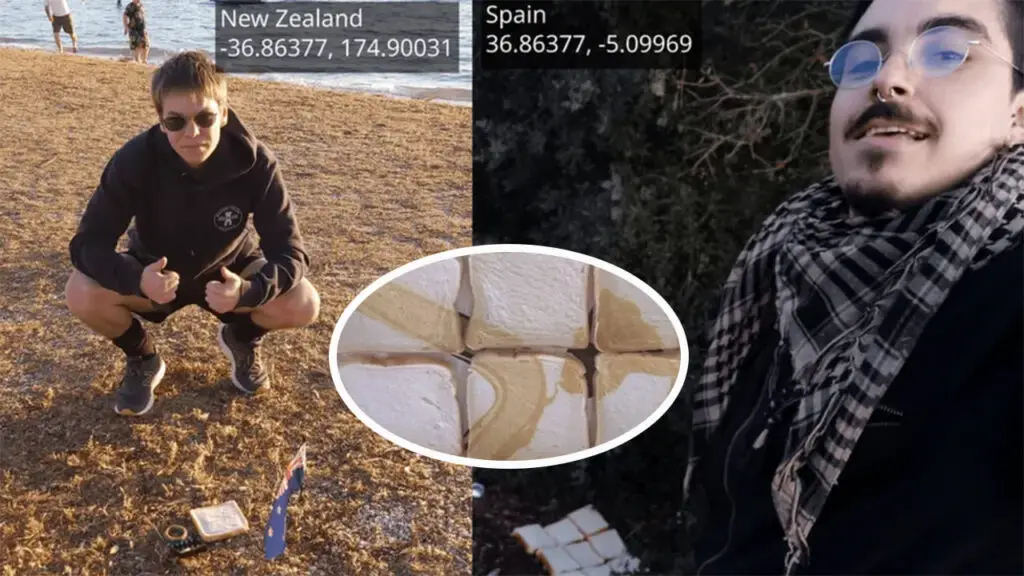The World’s Biggest Castle Is a Striking and Majestic Landmark in Europe

MALBORK, Poland — Europe’s castle game is strong. From Scotland’s rugged Edinburgh Castle to Germany’s fairy-tale Neuschwanstein, the continent isn’t short on medieval drama.
But if you’re hunting for sheer size, there’s one heavyweight that towers above the rest—literally.
Meet Malbork Castle, a sprawling 13th-century brick fortress in northern Poland that’s larger than 50 football fields and dripping with stories of crusading knights, royal intrigue, and wartime survival.
A Castle Built by Crusaders (and Ego)
Let’s rewind 800 years. Picture this: a Catholic military order, the Teutonic Knights, fresh off conquering Prussia, decides to flex their power by building the ultimate headquarters.
Using 12 million hand-molded bricks, they constructed Malbork—a 52-acre Gothic beast that housed 3,000 knights at its peak.
“This wasn’t just a castle; it was a statement,” says local historian Anna Kowalska. “The Teutonic Order wanted to dominate the region, and Malbork’s sheer scale screamed, ‘Don’t mess with us.’”
And dominate they did. For nearly two centuries, the castle served as the Order’s nerve center, complete with armories, chapels, and even a brewery.
But by the 15th century, financial woes and Polish resistance forced the Knights to abandon their fortress.
Enter Poland’s kings, who turned Malbork into a lavish royal pad, hosting feasts in the Grand Refectory—a hall so vast it could fit a jousting tournament.
War, Ruin, and Resurrection
Malbork’s story isn’t all chivalry and banquets.
The castle changed hands repeatedly, enduring sieges, Swedish invasions, and even a stint as a Nazi propaganda site during WWII.
In 1945, Soviet artillery reduced half of it to rubble. But like a phoenix (or a stubborn Polish bulldozer), Malbork rose again.
A painstaking, decades-long restoration—aided by pre-war blueprints—brought its crimson brick towers and intricate stained glass back to life.
By 1961, it reopened as a museum, and in 1997, UNESCO slapped a World Heritage badge on it, calling it a “masterpiece of late medieval architecture”.
Why Malbork Feels Like a Time Machine

Step inside today, and you’ll swear you’ve teleported to a Game of Thrones set—minus the dragons.
The castle’s three sections—High, Middle, and Lower—unfold like a medieval Russian doll.
Highlights include the Palace of the Grand Masters, where Teutonic bigwigs once schemed under vaulted ceilings, and the Castle Church of the Blessed Virgin Mary.
The church’s pièce de résistance? A 26-foot-tall sculpture of Mary and Child, towering beside the Golden Gate, a portal carved with scenes of the Last Judgment that’ll make you rethink your life choices.
But Malbork isn’t just about old stones. Its museums house amber art (Poland’s “gold”), medieval weaponry, and even a creepy collection of Teutonic coins.
“Every corner has a story,” says tour guide Marek Nowak. “One minute you’re admiring a 14th-century fresco, the next you’re standing in a dungeon where they stored beer.”
How to Visit (Without Getting Lost)
Here’s the good news: Poland is Europe’s safest country, with pickpocketing rates so low you’ll feel safer than in your grandma’s living room.
Malbork sits just 45 minutes from Gdańsk, a postcard-perfect city of canals and cobblestones that’s like Amsterdam’s chill cousin.
Summer is prime time—think 72°F (22°C) and golden sunlight bathing the castle’s brickwork. Pro tip: Wear comfy shoes. Exploring 52 acres is no joke.
For a hassle-free deep dive, book the Viator Malbork Castle Tour from Gdańsk.
At $135 per person, you’ll zip there in an air-conditioned van, then spend four hours with guides who’ll nerdy out on everything from secret knight tunnels to how the castle’s toilets worked (spoiler: gravity was involved).
“Our guide knew every brick’s backstory,” raved one traveler on Viator. “She even showed us where the Grand Master hid his wine stash”.
The Takeaway
Malbork Castle isn’t just a relic—it’s a survivor. It’s seen crusades, survived cannonfire, and even outlasted the Teutonic Knights who built it.
Today, it stands as a testament to Poland’s knack for turning trauma into triumph.
As the afternoon light glows on its brick facades, you can’t help but marvel: this isn’t just the world’s largest castle.
It’s a monument to human grit, one gargoyle at a time.
































